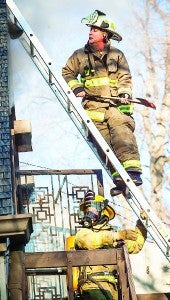Improved fire suppression rating could lower city’s insurance prices
Published 10:18 am Monday, April 13, 2015
A lower score is rarely a good thing, but for the Elizabethton Fire Department, learning the city’s public protection classification had dropped a point was welcome news.
The Insurance Services Office recently notified city leaders that as of July 1, the city’s public protection classification will be upgrading to a three from a four on a scale of 1-10. Elizabethton has been ranked at a four since 2004, Elizabethton Fire Department Chief Barry Carrier said.
“This places Elizabethton in the top 10 percent for fire suppression service of rated communities nationwide,” Carrier said. “We are very proud to see the improvement in our fire suppression rating schedule. We learned in 2012 that some changes were coming in the ISO rating. We studied those changes and the men have been working to address those items.”
The ISO is a national organization that gathers information on the firefighting readiness of local fire departments. The organization gathers data in its surveys which are supplied to the property/ casualty insurance industry for use in underwriting and calculating premiums for residential, commercial and industrial properties. The rating is particularly concerned with manpower, equipment, communications, response time and availability of sufficient water pressure.
What this ranking change means for the public is that their property insurance prices may go down.
“Communities whose PPC improves may get lower insurance prices,” ISO Manager Dominic Santanna said. “The PPC plays an important role in the underwriting process at insurance companies. In fact, most U.S. insurers use PPC information as part of their decision making when deciding what coverages to offer or prices to charge for personal or commercial property insurance.”
The ranking also gives a benefit to fire departments by giving them a tool to measure their improvements and changes over the years, Santanna said.
“The PPC also provides fire departments with a valuable benchmark, and is used by many departments as a valuable tool when planning, budgeting and justifying fire-protection improvements,” he said.
The improvement in the safety ranking was a combined city effort, Carrier said.
“Elizabethton’s PPC improvement is a direct result of many factors, including the foresight of our City Council in providing funding and resources,” Carrier said.
Carrier recognized several EFD members who he said were instrumental in the classification upgrade.
Deputy Chief Tim Edwards worked to institute necessary changes in the EFD’s training strategy and record-keeping process. Fire Marshal Jack Buckles improved all aspects of the department’s community education as well as hazard pre-planning and fire investigation. Shift Captains Rusty Barnett, Steve Murray and Todd Montgomery implemented policy and procedures for the firefighters and engineers of the department, Carrier said.
“Those are the ones who are doing the training, learning the skills, keeping our response times low, servicing and painting hydrants, completing tours and pre-plans, maintaining equipment and teaching our kids fire safety while maintaining the professional competency to keep fire dollar loss low in our city,” he said.”
The Elizabethton Water Department also played a role in the EFD gaining a lowered classification, Carrier said.
The department has been working to improve the city’s water line system, and have color-coded the city’s fire hydrants to signify what level of water supply is available, with blue being the maximum level.
“Compared with when our last ISO upgrade happened in 2004, there are lot more blue fire hydrants across the city, and that only comes with hard work,” Carrier said.
The EFD has their eyes on the next goal now, a safety ranking of two.
“Now that we have the new evaluation in hand, we can start working to make the changes necessary to reach the goal of an even better score when we are evaluated again in four years,” Carrier said.






